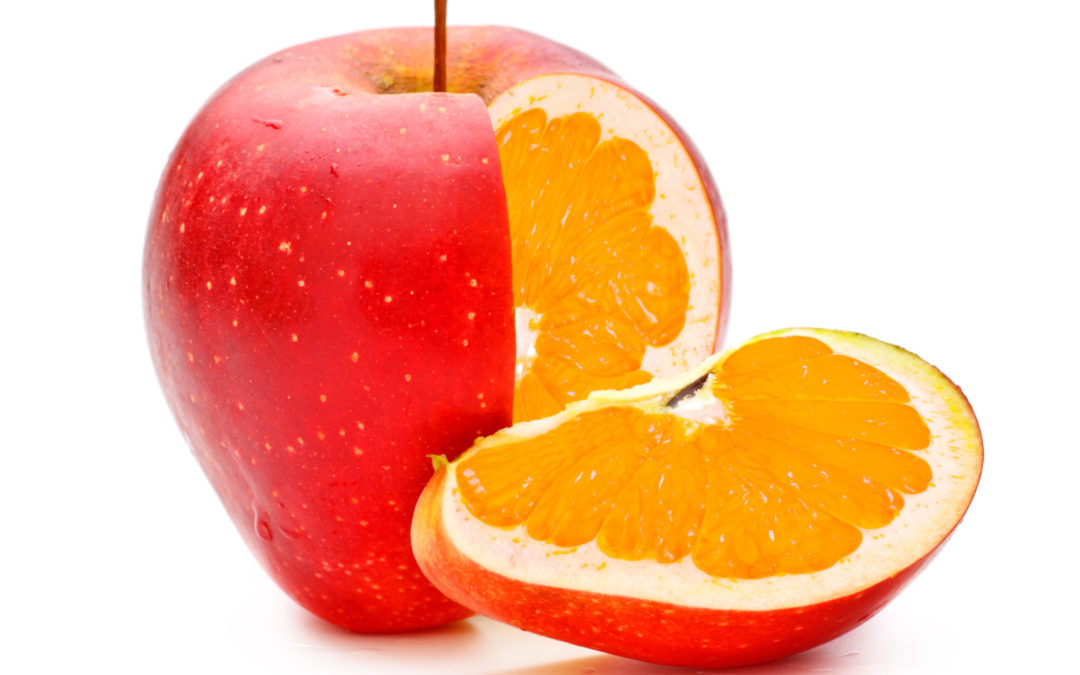Could either of these scenarios be you?
- Diagnosed with and treated for the wrong type of diabetes, but completely unaware of it.
- Wondering if you have been diagnosed with the wrong type of diabetes because the treatment is not working as well as it should.
As a primary care pharmacist managing diabetes routinely, I see both of these situations often.
Last week, I met a lady with Type 2 diabetes who was sure she had the wrong diagnosis because her blood sugars did not seem to be responding to her insulin. She was deeply worried that something wasn’t right because her blood sugars were so out of control.
The week before, I met a 50-something year old lady who has been treated for Type 2 diabetes for over 10 years. Her A1c has been well above goal for years and her blood sugars were anywhere from 50 to 400 daily. I took one hard look at her and knew she was a Type 1 diabetic. She had no idea part of her problem could simply be a misdiagnosis. We got busy on getting her a continuous glucose monitor and fixing her medications, meanwhile getting her connected to a great endocrinologist in the area.
How does this happen? How can you prevent this from happening to you?
It doesn’t have to be complicated
There are a few misunderstandings about Type 1 diabetes and Type 2 diabetes that we can clear up right away.
Then, I can clarify for you the basic differences between these 2 diseases (that are the complete polar opposites of each other) so you can tell them apart easily.
Last, I will explain how to tell without the lab testing which type you are likely to have, and then how to confirm your diagnosis with certainty.
Cleaning up misinformation
- Type 1 diabetes isn’t always diagnosed in children. Because Type 1 diabetes is typically diagnosed in children, adults presenting with high blood sugars are often presumed to have Type 2 diabetes. However, studies have shown that up to 1 in 5 people with Type 1 diabetes are diagnosed after the age of 40 years.
- You can have features of BOTH Type 1 and Type 2 diabetes. It is possible to have both. I will explain this in the next section.
- Insulin injections are prescribed for both types, but do NOT carry the same risks versus benefits in both diseases. Whereas people with Type 1 require insulin shots to survive and stay healthy, insulin actually makes Type 2 diabetes worse over time.
Breaking down the differences between Type 1 and Type 2 diabetes
These are essentially opposite conditions.
The defining feature of Type 1 diabetes is autoimmune destruction of the insulin-producing cells of the pancreas. Type 1 diabetics are insulin deficient. They do not make insulin, a critical hormone that allows the body to take up and use nutrients (carbohydrates) for energy and as building blocks (protein) for cellular growth. Insulin is also the main fat-storage hormone. It is responsible for storing extra energy in the form of body fat.
Conversely, Type 2 diabetes develops in the setting of TOO MUCH insulin. The defining feature of Type 2 diabetes is insulin resistance. Insulin resistance develops when the body is exposed to high levels of insulin most of the time, allowing the body to become tolerant to it. When the body stops responding to insulin, the pancreas has to make MORE insulin to overcome the resistance. Insulin levels are then even higher, which only worsens the resistance. In turn, the resistance drives the need to produce even more insulin. See how insulin resistance drives itself?
Meanwhile, in Type 2 diabetes, the body is in a perpetual fat-storage mode. High levels of insulin promote weight gain. Where people store their fat is a strong predictor of how easily they will develop Type 2 diabetes. Storing fat on the hips and love handles is much safer than storing fat in the abdomen.
When fat is packed in and around the internal organs, like the liver and pancreas, it starts to interfere with their proper function. The liver is literally packed to the max with sugar and fat, leading to fatty liver disease, and the pancreas stops making insulin.
When the switch is flipped to full blown Type 2 diabetes, the pancreas simply cannot keep up with the vicious cycle of insulin resistance and blood sugars soar. That’s when the hallmark symptoms start appearing: thirst, hunger, excessive urination, and blurred vision.
Now, let’s juxtapose these 2 conditions in a table so that you can see how different they really are.
The last point I want to make in this section is that it is possible to have features of BOTH Type 1 and Type 2 diabetes.
There is actually a separate diagnosis called latent autoimmune diabetes in adults (LADA) where people have characteristics of both Type 1 and Type 2 diabetes to varying degrees.
These individuals have auto-antibodies that attack and destroy insulin-producing cells while experiencing insulin resistance at the same time.
Now, imagine this scenario: if I have Type 1 diabetes and take insulin shots to control my blood sugars, but I eat excessive amounts of carbohydrates in my diet frequently, I’m going to be dosing my insulin constantly throughout the day. I’m eating from the time I wake up to whenever I go to bed and dosing insulin in large amounts frequently. I’m gaining weight because insulin is a fat-storage hormone, and I’m eating way more than I need for fuel.
Do you see where this is going? I have seen this many times in my practice. I can easily tell that a Type 1 diabetic has insulin resistance when their insulin doses are getting pretty high, and they are overweight or obese.
People who are sensitive to insulin need very little insulin to control their blood sugars. A little bit goes a long way. Total daily doses of insulin usually stay below 40 or 50 units split between long-acting and rapid-acting insulins divided into 4-5 injections. I have seen patients need as little as 8 units of long-acting a day and just 1-4 units to cover meals. BECAUSE THESE PEOPLE ARE SENSITIVE TO INSULIN — NOT RESISTANT TO IT.
How to tell yourself what type you are likely to have
Here is a list of questions to ask yourself that will lead you to a likely conclusion:
- Do I LOOK LIKE a Type 1 or a Type 2? Type 1’s are pretty lean, even skinny. They don’t carry much fat on their bodies or in their abdomen. Why? Because they don’t have a lot of fat-storage hormone (insulin) around! On the other hand, Type 2’s are in perpetual fat-storage mode.
- Do I respond to oral medications? If you have ever tried oral medications and they didn’t seem to work, requiring that you quickly moved on to insulin shots, you might be insulin deficient. When a person isn’t able to make any insulin at all, oral meds have little to no benefit.
- If I am on insulin shots, how much do I need to control my blood sugars? If you are using just long-acting insulin, your pancreas is up to the task of covering your meals and you are not completely insulin deficient. If you are using a total of more than 40 or 50 units of insulin per day, some degree of insulin resistance is likely at play.
- Have I ever been hospitalized for super high blood sugars? People with Type 1 are much more likely to end up in the hospital with diabetic ketoacidosis (DKA) than Type 2’s. Because most Type 2’s still retain some ability to make insulin, their sugars don’t usually get quite that high.
- Am I routinely seeing low blood sugars (<70) combined with wide swings in readings throughout the day (>300 points)? This commonly shows up in people with insulin sensitivity more than in people with insulin resistance. It’s not as strong of a sign, but certainly a pattern I pay attention to.
What to do if you want certainty
The gold standard for differentiating between Type 1 and Type 2 diabetes is a panel of lab tests. These detect the auto-antibodies that damage and destroy the insulin-producing cells in the pancreas, as well as something called C-peptide, which is a byproduct of insulin production.
If you have auto-antibodies, it is likely that you will become insulin deficient, the defining characteristic of Type 1 diabetes. If you have C-peptide around, you are still producing insulin. When low, it is a sign that production is abnormally low and points toward an insulin-deficient disease process.
These labs are ordered by a medical provider, so a medical visit would be expected to access this method.
Do you have more questions?
I’m here for you. Although I specialize in reversing Type 2 diabetes and helping people get off their medications, I would be happy to answer questions about Type 1 diabetes or anything else related to diabetes and meds.
Just reach out here and I will respond to you directly:



